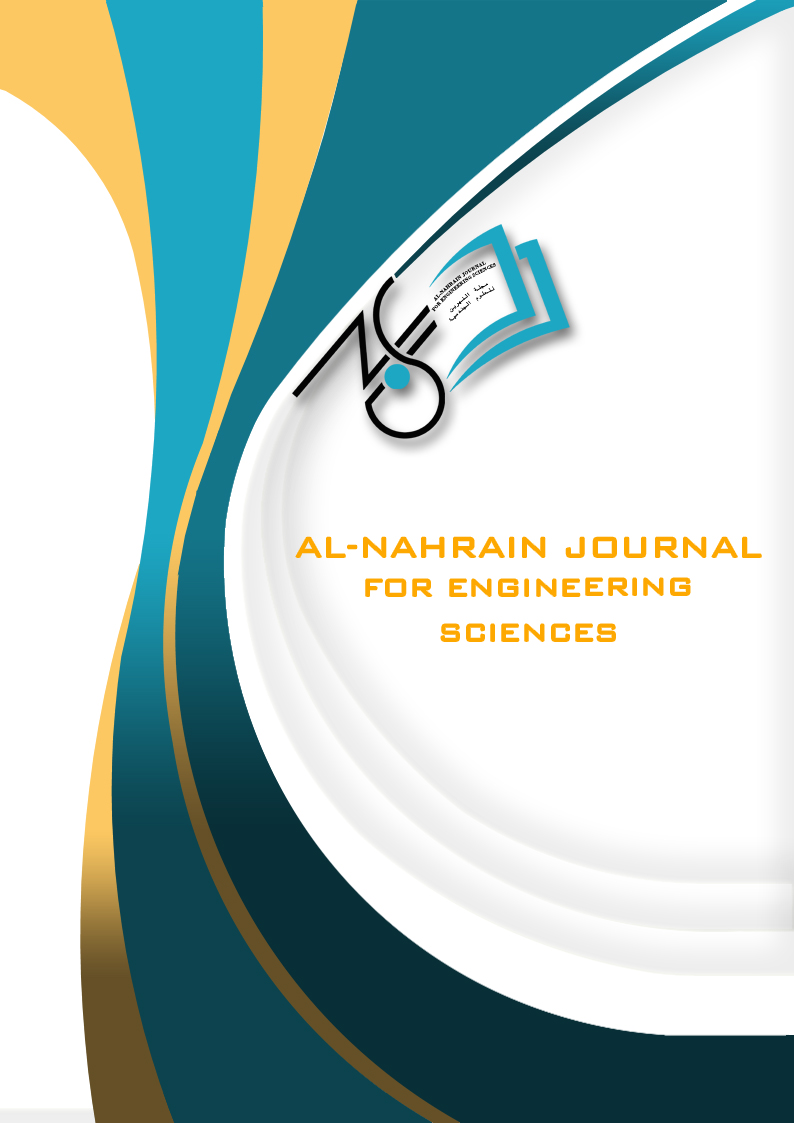The Concept of Urban Capacity and Removal Processes-City Center Al-Najaf Al-Ashraf a Model
DOI:
https://doi.org/10.29194/NJES.28010067Keywords:
Capacity, Density, Urban Space, Space MatrixAbstract
This study focused on the urban transformations resulting from the removal processes taking place in the urban fabric of sacred city centers, under the pretext of increasing urban capacity due to the density of use, which leads to the removal of important parts of the traditional urban fabric and adding them to the public urban space.
To determine the amount of usage densities that the area can accommodate represented by the case study, which is the center of the holy city of Najaf: the study was based on using a quantitative measurement approach to test the hypothesis using a multivariable density measurement tool. A space matrix capable of measuring densities, accessibility, and diversity in the fabric during three time periods, a historical period 1900, 1990, and the current time 2024, to know the amount of changes that have occurred in the fabric. A qualitative measurement tool, which is a random sample questionnaire, was used to measure perceived density to find out which fabrics within the city center are more accommodating of congestion. The research has found that high and advanced accessibility through an integrated fabric with high connectivity that makes the city spaces work as one space leads to an increase in flows. It works to reduce the momentum in the city center and thus preserve the traditional urban fabric that must be emptied for pedestrians, as it represents the only fabric with The human scale at the level of the city as a whole (i.e. a fabric that is comfortable for pedestrians) also represents the identity of the area, and to accommodate the densities, the percentage of building density must be increased outside the traditional fabric.
Downloads
References
S. Soltani, N. Gu, J. Ochoa, A. Sivam, and X. Sun, "Spatial configuration and density: How building density affects spatial arrangement of a neighborhood," Int. Rev. Spatial Plan. Sustain. Dev., vol. 8, no. 3, pp. 87–100, 2020. DOI: https://doi.org/10.14246/irspsda.8.3_87
E. Bobkova, L. Marcus, and B. Pont, "Multivariable measures of plot systems: Describing the potential link between urban diversity and spatial form," in 11th Space Syntax Symp., Lisbon, 2017.
B. Mashhoodi and M. B. Pont, "Studying land-use distribution and mixed-use patterns in relation to density, accessibility, and urban form," in 18th Int. Seminar Urban Form, Aug. 2011, pp. 1–19.
M. Berghauser Pont and P. Haupt, Space Matrix: Space, Density and Urbanization. Delft: Faculty of Architecture, Delft Univ. of Technol., 2010.
D. Kim and J. Dovey, Urban Design Thinking: A Conceptual Toolkit. Bloomsbury Publishing, 2016.
D. Sim, Soft City: Building Density for Everyday Life. Washington, DC: Island Press, 2019.
A. Churchman, "Disentangling the concept of density," J. Plan. Lit., vol. 13, no. 4, pp. 389–411, 1999. DOI: https://doi.org/10.1177/08854129922092478
A. Sivam and S. Karuppannan, "Density, design, and their impact on urban fabric," in 2nd Int. Conf., p. 196.
N. Dempsey, C. Brown, and G. Bramley, "The key to sustainable urban development in Center: Urgent issues and possible solutions," in IOP Conf. Ser.: Mater. Sci. Eng., vol. 1058, no. 1, p. 012052, 2012.
T. Lumitaival Janram, "Harboring density: Exploring density and public spaces as a tool for designing Mellersta Hamnen in Malmö," 2021.
D. Kim and J. Dovey, op. cit.
J. Bryon and B. Neuts, "Crowding and the tourist experience in an urban environment: A structural equation modeling approach," J. Urban Environ., vol. 22, pp. 305–314, Jul. 2008.
A. Churchman, op. cit., pp. 389–411.
B. Neuts and P. Nijkamp, "Crowding perception in a tourist city: A question of preference," 2011. DOI: https://doi.org/10.2139/ssrn.1938174
Ibid., B. Neuts and P. Nijkamp, 2011.
J. Bryon and B. Neuts, op. cit., pp. 305–314.
HCM 2000: Highway Capacity Manual, National Academy of Sciences, ISBN 0-309-06681-6, 2000.
R. F. Kellett, S. Fryer, and Budke, "Specification of indicators and selection method for Apollantial. Community demonstration project," Univ. of British Columbia, Vancouver, Canada, 2009.
M. Berghauser Pont, op. cit., pp. 1226–1242.
S. Al-Jumaili, "The impact of building legislation on the deterioration of the urban structure of Baghdad’s commercial streets," J. Coll. Eng., Al-Nahrain Univ., vol. 16, no. 2, pp. 36–46.
A. Churchman, op. cit., pp. 389–411.
B. Neuts and P. Nijkamp, op. cit., p. 23.
M. A. A. Alkeshwan and N. A. R. Al Basr, "Analysis of the urban spatial organization of ancient city centers: A case study of Najaf old city center," Akkad J. Contemp. Econ. Stud., vol. 2, no. 3, pp. 236–263, 2022.
S. L. Farhan, H. I. Alyasari, V. S. Akef, S. L. Zubaidi, and K. S. Hashim, "Analyzing the transformed urban patterns of Al-Najaf historical," Feb. 2021.
"Imam Ali Holy Shrine," [Online]. Available: https://apps.apple.com/us/developer/imam-ali-holy-shrine.
S. Farhan, V. Akef, and Z. Nasar, "The transformation of the inherited historical urban and architectural characteristics of Al-Najaf’s Old City and possible preservation insights," Front. Archit. Res., vol. 9, no. 4, pp. 820–836, 2020. DOI: https://doi.org/10.1016/j.foar.2020.07.005
E. Pafka, "Nothing gained by only counting dwellings per hectare: A hundred years of confusing urban densities," in 2013 State of Australian Cities Conf., Nov. 2013.
M. Berghauser Pont, G. Stavroulaki, E. Bobkova, J. Gil, L. Marcus, J. Olsson, K. Sun, M. Serra, B. Hausleitner, A. Dhanani, and A. Legeby, "The spatial distribution and frequency of street, plot and building types across five European cities," Environ. Plan. B: Urban Anal. City Sci., vol. 46, no. 7, pp. 1226–1242, 2019. DOI: https://doi.org/10.1177/2399808319857450
Ibid., M. Berghauser Pont, pp. 1226–1242.
HCM 2000, op. cit., p. 44.
Downloads
Published
Issue
Section
License
Copyright (c) 2025 Maiaseh Mzhr Al-Anazi, Haitham Abdul Hussein Al-shamari

This work is licensed under a Creative Commons Attribution-NonCommercial 4.0 International License.
The authors retain the copyright of their manuscript by submitting the work to this journal, and all open access articles are distributed under the terms of the Creative Commons Attribution-NonCommercial 4.0 International (CC-BY-NC 4.0), which permits use for any non-commercial purpose, distribution, and reproduction in any medium, provided that the original work is properly cited.














